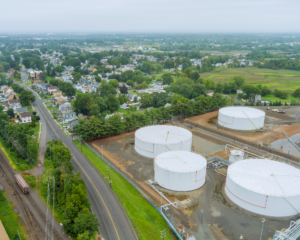Trump, Federalism, and the Environment
The Trump Administration has pursued a strategy of reducing federal government responsibility for environmental protection and devolving responsibility to the states.

Read Time: 4 minutes
Published:
“Environmental federalism” may seem like an arcane topic, but it has been a major concern of the Trump Presidency. In a recently published article, we argued that the Trump Administration has pursued a strategy of reducing federal government responsibility for environmental protection and devolving some of this responsibility to the states. Because this approach is starkly different from that of the Obama Administration, the result has been whiplash in terms of the role of the federal government in protecting human health and the environment.
The Trump Administration’s environmental federalism agenda has at least three components:
- a comprehensive attempt to roll back federal environmental regulation;
- a strong signal that few new federal pro-environment initiatives will be pursued;
- an attempt to turn more environmental policy authority over to the states.
The rollback of federal environmental regulations has involved several steps, the first of which occurred in concert with Republicans in Congress. Using the Congressional Review Act, the Trump Administration rescinded more than a dozen regulations, including transparency rules aimed at US energy companies, the Office of Surface Mining’s Stream Protection Rule, and a measure outlawing “extreme hunting” practices on federal lands. Subsequently, the Environmental Protection Agency, Department of Interior, and other agencies announced implementation delays of other rules (e.g., ozone nonattainment, limits to toxic discharges from power plants into public waterways, methane venting and flaring from oil and gas wells on federal land), as well has high profile efforts to weaken if not fully undo major rules such as the Obama-era Clean Power Plan, Waters of the United States rule, and fuel economy standards. Finally, the Administration has dramatically reduced enforcement of other existing environmental regulations.
A second component involves a broader diminishment of the federal government’s role in promulgating new environmental protection measures. That is, although the Trump Administration has been quite active in environmental policymaking, it has not put forward any serious measures—either legislation or regulations—intended to enhance environmental protection. Moreover, the Trump Administration has promoted a regulatory reform strategy, instituted mostly through executive orders, that aims to limit the adoption of new regulations. Examples of this strategy include a regulatory budget that requires the total costs of all new regulations to be no greater than zero and a two-for-one rule that requires agencies to identify at least two regulations to be repealed for every new rule proposed.
Lastly, the Trump Administration’s initial budget proposal and strategic planning documents have emphasized a version of “cooperative federalism” that would entail giving more authority and leeway to state governments.
Lastly, the Trump Administration’s initial budget proposal and strategic planning documents have emphasized a version of “cooperative federalism” that would entail giving more authority and leeway to state governments. Somewhat paradoxically, these increased responsibilities have not been backed by budgetary resources. At the same time the EPA committed to empowering states to do more, the Trump Administration has proposed cutting cooperative grants to states for this very purpose.
As the Trump Administration attempts to shift the balance of authority from the federal government to states, it is important to note that all these actions are being taken through administrative tools. This strategy can be effective in the short-term, since administrative actions like executive orders and regulations can be used to change policy relatively quickly. However, their durability for the medium- and long-term is tenuous since they often run afoul of legal scrutiny. (Many Trump Administration actions have already been rejected by the federal courts.) They also face the risk of being undone by a subsequent president with a different policy agenda and different views about the role of the federal government in providing environmental protection.
Featured image: Toadstool Hoodoo, Grand Staircase-Escalante National Monument. PGKempf/iStock.




